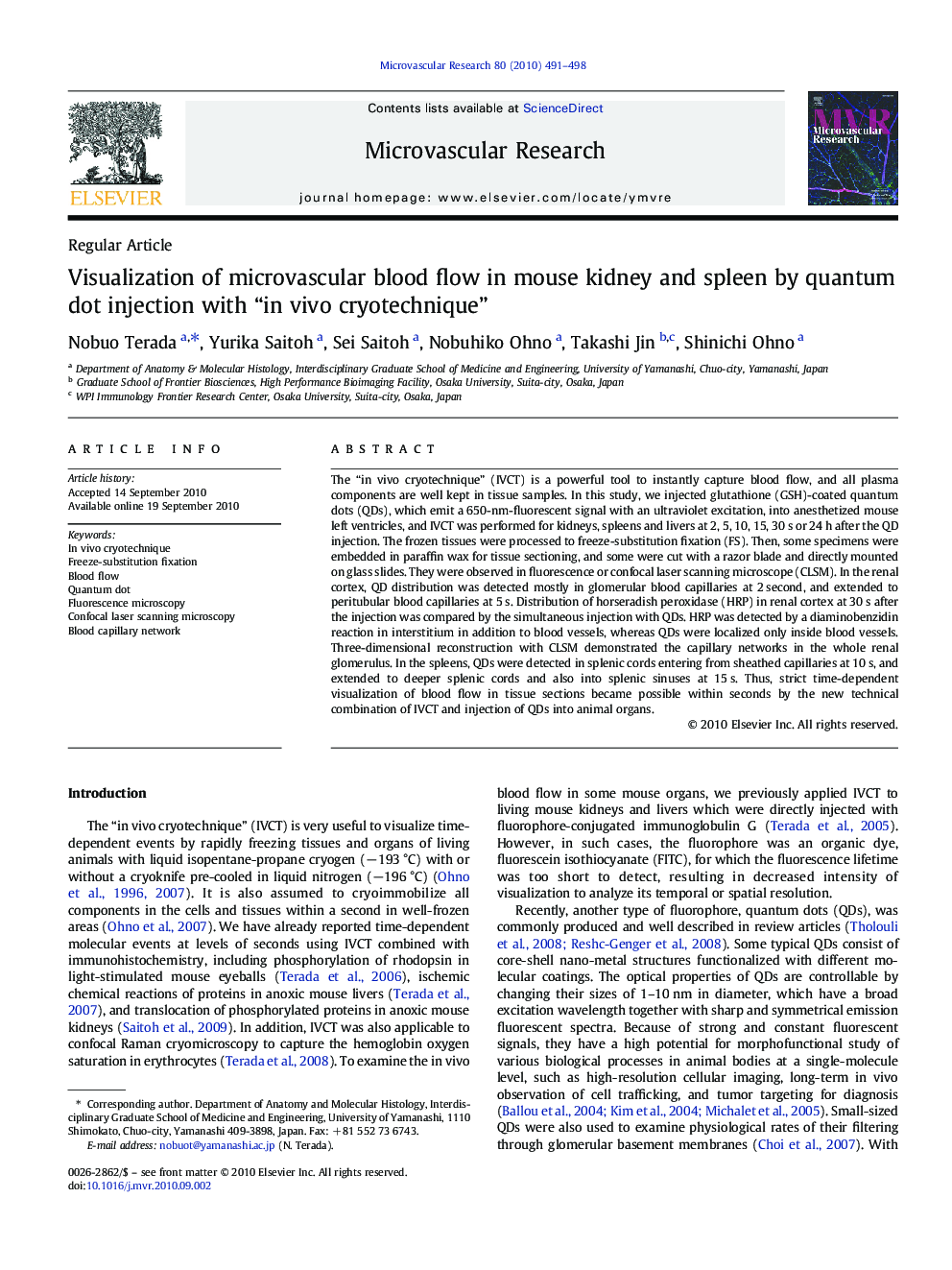| Article ID | Journal | Published Year | Pages | File Type |
|---|---|---|---|---|
| 1995137 | Microvascular Research | 2010 | 8 Pages |
The “in vivo cryotechnique” (IVCT) is a powerful tool to instantly capture blood flow, and all plasma components are well kept in tissue samples. In this study, we injected glutathione (GSH)-coated quantum dots (QDs), which emit a 650-nm-fluorescent signal with an ultraviolet excitation, into anesthetized mouse left ventricles, and IVCT was performed for kidneys, spleens and livers at 2, 5, 10, 15, 30 s or 24 h after the QD injection. The frozen tissues were processed to freeze-substitution fixation (FS). Then, some specimens were embedded in paraffin wax for tissue sectioning, and some were cut with a razor blade and directly mounted on glass slides. They were observed in fluorescence or confocal laser scanning microscope (CLSM). In the renal cortex, QD distribution was detected mostly in glomerular blood capillaries at 2 second, and extended to peritubular blood capillaries at 5 s. Distribution of horseradish peroxidase (HRP) in renal cortex at 30 s after the injection was compared by the simultaneous injection with QDs. HRP was detected by a diaminobenzidin reaction in interstitium in addition to blood vessels, whereas QDs were localized only inside blood vessels. Three-dimensional reconstruction with CLSM demonstrated the capillary networks in the whole renal glomerulus. In the spleens, QDs were detected in splenic cords entering from sheathed capillaries at 10 s, and extended to deeper splenic cords and also into splenic sinuses at 15 s. Thus, strict time-dependent visualization of blood flow in tissue sections became possible within seconds by the new technical combination of IVCT and injection of QDs into animal organs.
Graphical AbstractFigure optionsDownload full-size imageDownload as PowerPoint slide
